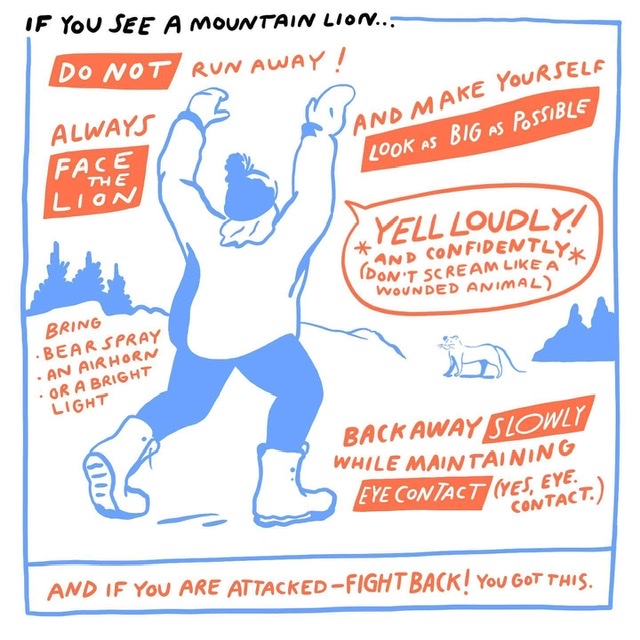Safety
Climbing involves life-threatening risks that every climber assumes. First and foremost is the risk of falling while climbing a route. Routes vary in difficulty and in the amount and kind of experience and preparation needed to enjoy them safely. Routes change or deteriorate over time. Climbing conditions vary daily due to weather and other factors. A route that is safe in good weather or for a highly conditioned, properly-equipped climber, may be completely unsafe for someone less conditioned, or for everyone under adverse conditions. Most importantly, the fact that a route is described on this website or in the book is not a representation that it will be safe for YOU. By using this website, you agree that you have read and accept the terms of the website’s legal disclaimer. Read the website DISCLAIMER.
Minimize your risks by being knowledgeable, prepared and alert. General discussions on climbing are available through many good books and public courses on the subject. Take advantage of these resources and increase your knowledge. Just as important, always be aware of your own limitations and existing conditions when and where you are climbing. If conditions are dangerous or if you are not prepared to deal with them safely, change your plans. It is better to have wasted a few hours or days than to be the subject of a bad fall or rescue. NEVER press on when unsure about the route. Here is an example of what can go wrong: Death on the Way to Mount Church
“Getting to the top is optional. Getting down is mandatory.” – Ed Viesturs
Hazards
While falling is the first risk that climbers take, there are many hazards and dangers that you might encounter or suffer in the mountains. The following list highlights and links to discussions of some of the hazards you may encounter while climbing mountains. The topics in italics are linked to pages that are found on other websites.
- Altitude Sickness
- Avalanches
- Black Bears
- Cornices
- Dangerous Stream Crossings
- Dehydration
- Driving in the Mountains
- Equipment Failure
- Falling Trees
- Forest and Range Fires
- Getting Lost
- Giardia
- Grizzly Bears
- Heat/Sun Stroke
- Hypothermia
- Lightning
- Mosquitoes
- Mountain Lions
- Rattlesnakes
- Rock Crevasses
- Summer Snowfields
- Thrown Rocks and Golf Balls
- Thunderstorms and Lightning
- Ticks
- Tree Wells
- Unstable Talus Fields
- Water-Melt Tunnels
- Wolves
Learning how to avoid and survive these dangers should be high on your list of preparations BEFORE embarking on mountain adventures. Keep in mind that you may learn how to deal with all of the hazards that you might encounter in the mountains, do everything right in response to them and still run into trouble or even die. Under some unfortunate circumstances, fate may still get you. Your judgment IS your guiding light and protector in the mountains. Develop good judgment. Don’t climb into trouble.
Personal Responsibility
Mountain climbing is dangerous. Many people die or are injured every year while engaging in the sport. This website and its contributors make no warranties or representations of any kind regarding the accuracy of the information contained on the website nor assume any liability for your use of this information. The information presented on the website may contain factual errors and subjective opinions regarding routes and ratings. Please read the entire Disclaimer. Remember, it is your responsibility to learn the skills necessary for safe travel in the mountains. You assume any and all of the risks associated with mountain climbing. You are solely responsible for your actions in the mountains.
Frank Smythe, noted British mountaineer who made many first ascents in the Himalaya noted after a near death accident “It is in this way that mountaineering accidents occur; ignorance, selfishness, carelessness, vanity; many bad human traits are responsible for the great majority of disasters. Of course there are genuine accidents, which no human skill or power can avert, such as stones falling unexpectedly, or sudden bad weather, or the breaking away of an apparently firm handhold or foothold, but the great majority of accidents are avoidable, and occur primarily through recklessness and inexperience.” Keep his words in mind as you climb.
